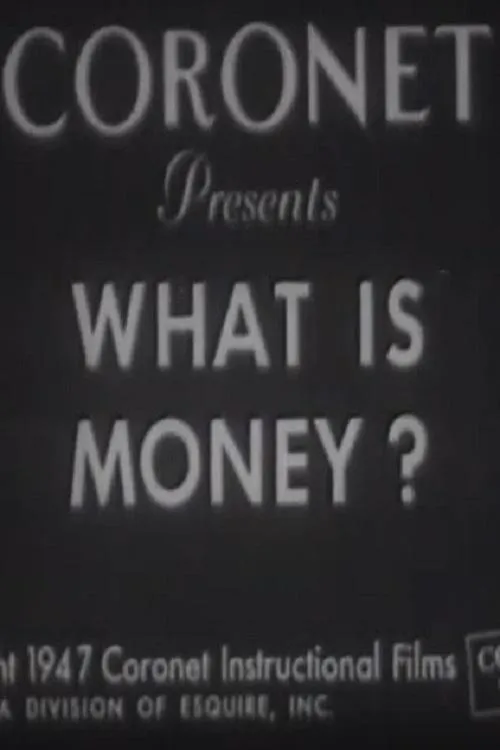What Is Money?

Plot
The documentary film 'What Is Money?' takes viewers on a captivating and thought-provoking journey to explore the concept of money. Narrated in an engaging and accessible manner, the film delves into the intricacies of money by following a simple $5 bill as it changes hands from person to person, showcasing the versatility, convenience, and essential role of money in our everyday lives. As the five-dollar bill begins its journey, it passes from one individual to another, entering a diverse array of contexts and transactions. It pays for food at a casual diner, is used to buy clothes at a boutique, purchases a book from a street vendor, and is even used to buy a lottery ticket. These varied transactions illustrate the fundamental functions of money, as defined by economists and social theorists: as a standard of value, a storehouse of value, and a convenient medium of exchange. Throughout its journey, the film highlights the value that money holds for each individual, revealing their motivations and emotions as they utilize the $5 bill to satisfy their needs or pursue their wants. A young couple uses the money to buy food for their family, a college student uses it to purchase a book by her favorite author, and a retiree relies on the money to buy a lottery ticket, hoping to win the jackpot and live out their golden years in luxury. As the $5 bill continues to change hands, the film also demonstrates how money enables economic activity, facilitating the exchange of goods and services between individuals and businesses. Without money, these transactions would be much more complicated and challenging to conduct, as people would need to find bartering partners with complementary needs and wants. Money simplifies this process, allowing individuals to specialize in their area of expertise and exchange their goods and services with others who possess what they need. However, 'What Is Money?' also touches on the more contentious aspects of money and its functions. The film points out that the value of money is not inherent but rather is determined by social and cultural factors. The money is printed by governments, and its value is often linked to a specific currency or a basket of currencies. In this sense, money serves more as a social convention than an object with inherent value. One significant challenge with the standard of value is that its value can fluctuate over time due to economic and social factors. People's perception of the money, or any particular currency, can change significantly based on government actions, global economic factors, and other unpredictable events. For example, in the past, gold and silver coins held intrinsic value as they were valued for their durability and beauty. As the value of these coins went up or down, it directly affected the value of the currency. As 'What Is Money?' explores these complex concepts, the film encourages viewers to think critically about money and its functions in our society. The documentary raises questions about the origins of money, its role in facilitating economic activity, and its social and cultural significance. Through this captivating exploration of a seemingly mundane object, 'What Is Money?' sparks meaningful discussions about the value we place on money and its impact on our daily lives. Ultimately, 'What Is Money?' is a thought-provoking film that stimulates viewers to consider money in a new light. By chronicling the journey of a five-dollar bill as it passes through numerous transactions, the film reveals the value and significance that money holds in our lives, serving as a reminder of its importance in facilitating economic activity and social interaction. As the film concludes, it is clear that 'What Is Money?' is more than just a documentary about a $5 bill; it's an engaging exploration of the fundamental nature of our economy and its essential currency.
Reviews
Recommendations


